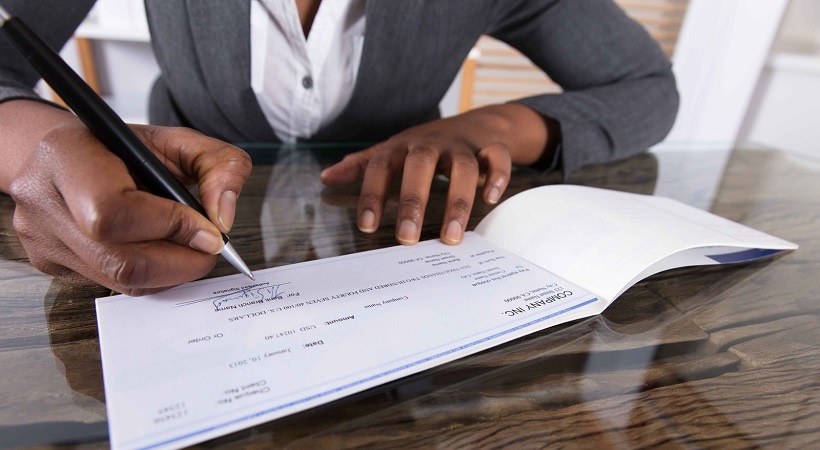Inspiration
What Are Dividends?
In partnership with Acorns
Written by John Schmidt
Updated
If you’ve been investing for a while, you may have seen something called a dividend listed on your statement. (You may have even received a check with “dividend” in the memo line, if you aren’t reinvesting yours, which you probably should be…but more on that later.)
Dividends are kind of like the baker’s dozen of investing, the little extra something you get just for putting your money in certain companies or funds. They might seem small—in mid-2019, the average dividend payment for U.S. stocks was 1.87 percent of your investment, according to Siblis Research—but dividends can drastically impact your long-term investment performance.
So, what exactly is a dividend?
A dividend is a periodic payout of earnings that some companies and funds share with investors. Think of it as a little bonus on top of regular returns. With dividends, you may actually earn money even when the market is down.
For example, if you had $1,000 invested in a fund that pays out the average 1.87 percent dividend, you’d earn $18.70, regardless of how the market had performed that year. Sounds nice, right?
Why do companies offer dividends?
Companies don’t cut you in on the action purely out of the goodness of their hearts. They pay out dividends to encourage people like you to invest with them.
When you invest in the stock market, you could hypothetically lose money—though, historically, despite bumps, the stock market has grown significantly over time. Even when you’re investing in well-established companies or funds, though, there’s no guarantee you’ll see positive returns. Dividend payments help make stocks more attractive to investors by ensuring you’ll receive some payment.
Dividend-paying companies tend to be more established companies so they’re in a position to offer this sliver of their profits. And providing a dividend in and of itself may make a stock more desirable, driving up demand (and therefore the price) of a stock.
How often do companies pay dividends?
Most U.S. companies pay out dividends quarterly, or four times a year. There’s no set rule, though, and individual companies may choose to give dividends once a year, twice a year or at no set schedule, only offering payments when they’ve had a particularly good year or quarter.
What do I have to do to get a dividend?
Generally, nothing. Dividends are the participation trophies of investing: You get them just for holding a stock at the end of a quarter or the date dividends are paid out. They also aren’t usually prorated, meaning you get the same amount if you’ve been invested the whole quarter as you do if you invested the day before the quarter closed.
Even if you don’t own individual shares of a company, you may receive dividend payments for it when you invest in funds that hold shares of it. Check your fund prospectus or fact sheet to see what dividend payments you may receive.
Should I only invest in dividend-paying stocks?
While it may be tempting to invest all of your money in dividend stocks, it’s still important to have some diversification. Because dividend-paying companies are usually more established, their years of exponential growth are probably behind them—or at least are much slower coming. It’s easier to double or triple in value before your valuation has hit the billions. Dividend payouts are also more common in certain sectors, like utilities and telecommunications. Focusing on those companies may lead you to allocate too much of your portfolio to the same category.
That’s why experts recommend balancing your investment portfolio with dividend and non-dividend stocks and funds. That way you benefit from the steady performance of more established companies, which may be less likely to fold unexpectedly, and the potential growth of newer, smaller companies. While they may be riskier than their time-tested counterparts, their value may grow faster.
What should I do with my dividends?
When you open an investment account, you’re usually given the option of taking any dividend payments as cash or reinvesting them.
The amount for some dividends can seem so trivial that you might be tempted to take the money and run. But there’s an important reason why you should seriously consider reinvesting those dividends: Since 1960, a whopping 82 percent of returns for the S&P 500 have been from growth of reinvested dividends, according to an analysis by Hartford Funds.
Even in just the last decade, people who reinvested dividends into S&P 500 funds saw more than 2 percent higher returns than those who opted for them to be paid out.
How does that work?
Dividends are really the only way you can get more shares of a fund without investing more of your own money. Reinvesting dividends lets you increase the shares you own, which can increase your overall account value.
By reinvesting dividends, you’re also regularly buying into a company or fund. That mimics the powerful investing principle called “dollar-cost averaging.” Basically, by investing regularly, you’re able to buy more when share prices are low and less when they’re high, which can help you pay less per share overall, boosting your long-term returns.
How can I find dividend stocks and funds?
You can research dividend-paying stocks and funds using fund research platforms, like Morningstar, Kiplinger or the Securities and Exchange Commission websites.
Brokerages and investment companies may also identify their dividend-paying stocks and funds on their websites. Acorns portfolios include a mix of dividend funds and automatically reinvest all dividend payments to maximize potential gain over the long term.
Not investing with Acorns yet? Set up an account in minutes here.
Do I pay taxes on dividends?
Because they’re technically a form of income, you will probably owe taxes on any dividends your investments earn. If you reach minimum reporting thresholds, your brokerage should send you a 1099-Div form that you can use to complete your taxes. Make sure to check with a tax professional about how best to report any dividend income.
The bottom line
Dividends can drastically improve your long-term investment returns when reinvested over years or decades. That’s what makes dividend-paying stocks and funds a vital part of a diversified investment portfolio.
Acorns portfolios include a mix of dividend-paying funds to help your balance grow over time.
Investing involves risk including loss of principal. This article contains the current opinions of the author, but not necessarily those of Acorns. Such opinions are subject to change without notice. This article has been distributed for educational purposes only and should not be considered as investment advice or a recommendation of any particular security, strategy or investment product. Information contained herein has been obtained from sources believed to be reliable, but not guaranteed.










More like this